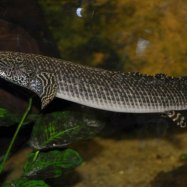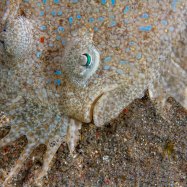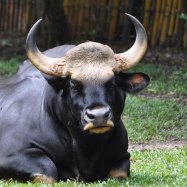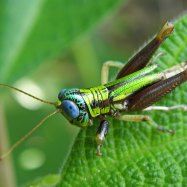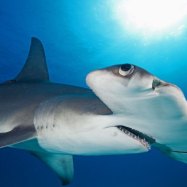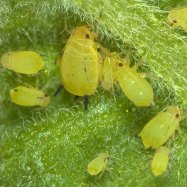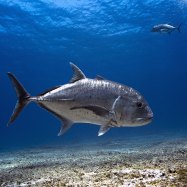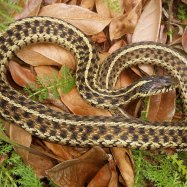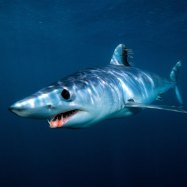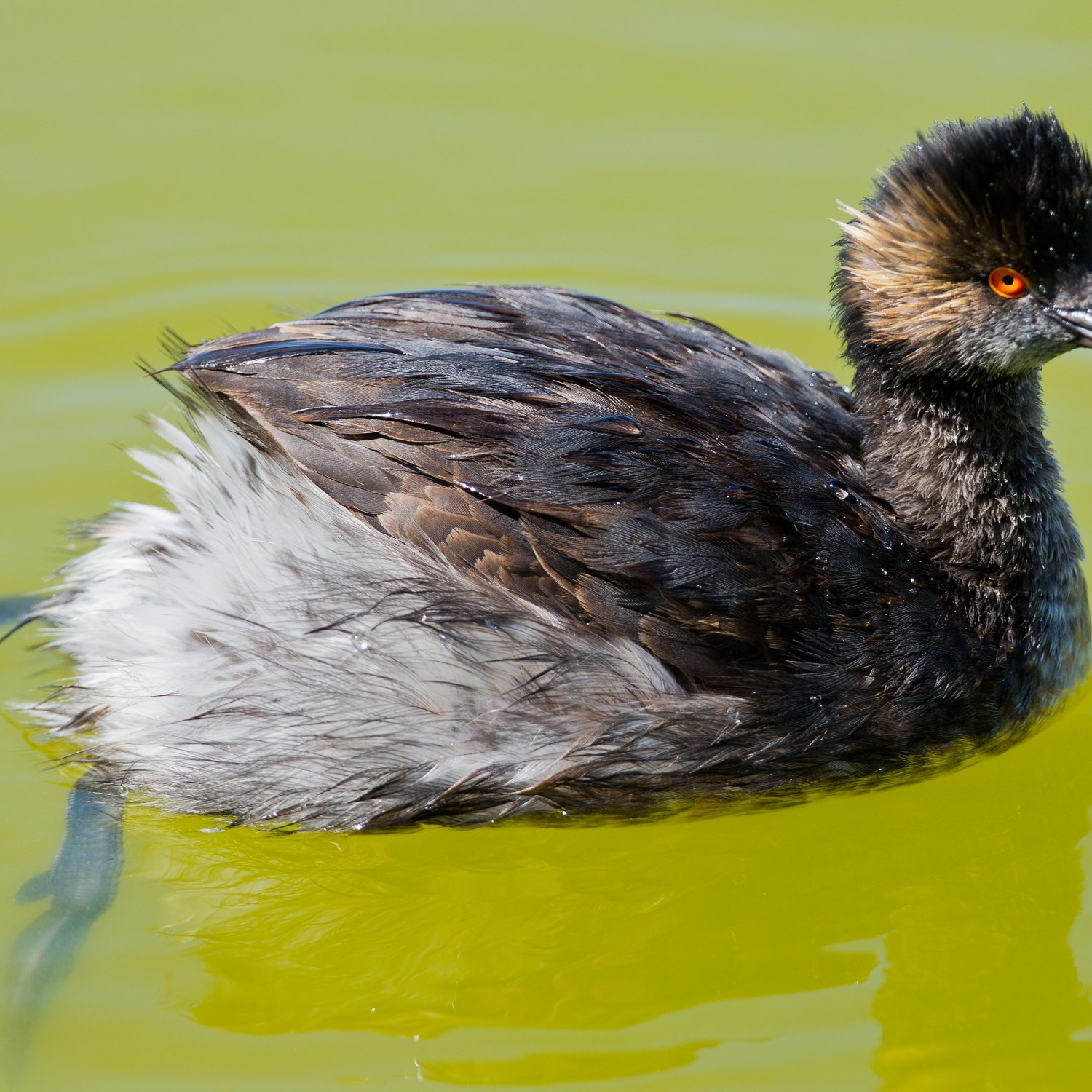
Eared Grebe
25-35 cm
Meet the Eared Grebe, a small and compact bird found in western and central North America. This member of the Podicipedidae family measures 25-35 cm in length and is known for its distinctive red eyes. Keep an eye out for these beautiful birds in the wetlands and marshes of their native habitat. #EaredGrebe #NorthAmerica #birdwatching
Animal Details Summary:
Common Name: Eared Grebe
Kingdom: Animalia
Habitat: Freshwater lakes, marshes, and ponds
The Eared Grebe: A Fascinating Aquatic Bird
The Eared Grebe, scientifically known as Podiceps nigricollis, is a small yet fascinating aquatic bird found in freshwater lakes, marshes, and ponds in different parts of the world. This bird belongs to the animalia kingdom, chordata phylum, aves class, and podicipediformes order. It is believed to have originated in the United States and is mostly found in the western and central parts of North America. The Eared Grebe is described as a small, compact bird with black and white coloration, measuring between 25-35 cm in length Eared Grebe.There is no denying that the Eared Grebe is a unique and fascinating bird, and in this article, we will explore its characteristics, habitat, behavior, and more.
Habitat and Distribution
The primary habitat of the Eared Grebe is in freshwater lakes, marshes, and ponds. This bird prefers calm, shallow, and open waters with abundant vegetation, where it can easily find food and build its nest. However, during the winter months, it migrates to saltwater marshes, estuaries, and coastal bays to feed and roost.The Eared Grebe can be found in different parts of the world, including North America, Europe, and Asia. More specifically, it is distributed in Canada, United States, Mexico, Russia, China, and Japan. The highest concentration of this bird can be found in the western and central parts of North America, especially in states like California, Utah, Nevada, and Montana.
Physical Description
At first glance, the Eared Grebe may seem like any other aquatic bird. However, a closer look reveals its unique and distinctive features Eastern Kingbird. As its name suggests, this bird has "ears," which are actually light brown tufts of feathers that extend from the sides of its head. These "ears" are more prominent during the breeding season and are used to attract potential mates.The Eared Grebe has short, stout legs, and webbed feet, which make it an excellent swimmer. Its plumage is mainly black and white, with a black head, neck, and upperparts, and a white belly and undertail. It also has a distinctive white patch on its cheek, which is another feature used for courtship display. During the breeding season, its bill turns a bright golden-yellow color, while in non-breeding season, it is dark gray.
Diet and Feeding Behavior
The Eared Grebe is a carnivorous bird, meaning it feeds on other animals. Its diet mainly consists of small aquatic creatures such as insects, crustaceans, and small fish. It uses its sharp bill to catch its prey while diving in the water. Interestingly, this bird has the ability to adjust the amount of water in its feathers to change its buoyancy, allowing it to dive deep underwater in search of food.The Eared Grebe is not a picky eater and is known to consume a variety of prey. However, studies have shown that its diet may vary based on the availability of food in its habitat. During the breeding season, the Eared Grebe may also supplement its diet with plant material.
Behavior and Mating
The Eared Grebe is a social bird that usually forms large flocks during the non-breeding season. These flocks can consist of hundreds to thousands of birds, and they often engage in synchronized swimming and diving behaviors. However, during the breeding season, they become territorial and solitary birds.The breeding season of the Eared Grebe occurs during the spring and summer months. Males perform elaborate courtship displays to attract females, including engaging in synchronized swimming, diving, and calling. Once a pair has formed, they will build a floating nest made of marsh vegetation and anchored to reeds or floating plants. The female will lay around 3-5 eggs, and both parents will take turns in incubating the eggs.
Once the eggs hatch, the chicks are able to swim and feed themselves immediately. However, they are still vulnerable to predators, including large fish and other birds. The Eared Grebe parents are known to be attentive and protective, and they will fiercely defend their young from any potential threats.
Conservation Status
The Eared Grebe is listed as a least concern species by the International Union for Conservation of Nature (IUCN). This means that its population is stable, and there is no immediate threat of extinction. However, like many other aquatic birds, the Eared Grebe is vulnerable to habitat loss and degradation. Human activities, such as pollution and development, can also have a negative impact on its habitat and food sources.One significant conservation threat to the Eared Grebe is the management of bodies of water for agriculture and flood control. This can lead to changes in water levels that may negatively affect the bird's breeding and feeding habitats. Thankfully, conservation efforts are being made to protect and preserve the freshwater wetlands and marshes that are vital to the survival of this species.
The Eared Grebe and its Importance in the Ecosystem
The Eared Grebe may be a small, seemingly insignificant bird to some. Still, it plays a crucial role in maintaining a healthy ecosystem. As a predator, it helps control the population of its prey, and its nesting and feeding habits also help support the growth and survival of other species in its habitat.Furthermore, the Eared Grebe is an indicator species, meaning its presence or absence can indicate the overall health of its ecosystem. Therefore, studying the behavior, population, and distribution of this bird can provide us with valuable information about the state of our environment.
Conclusion
In conclusion, the Eared Grebe is a unique and fascinating aquatic bird that inhabits freshwater lakes, marshes, and ponds in North America, Europe, and Asia. Despite its small size, it has many remarkable features, such as its distinctive "ears," sharp diving skills, and beautiful courtship displays. With its essential role in the ecosystem and the conservation efforts being made to protect its habitat, we can hope to see this beautiful bird for generations to come.

Eared Grebe
Animal Details Eared Grebe - Scientific Name: Podiceps nigricollis
- Category: Animals E
- Scientific Name: Podiceps nigricollis
- Common Name: Eared Grebe
- Kingdom: Animalia
- Phylum: Chordata
- Class: Aves
- Order: Podicipediformes
- Family: Podicipedidae
- Habitat: Freshwater lakes, marshes, and ponds
- Feeding Method: Carnivorous
- Geographical Distribution: North America, Europe, Asia
- Country of Origin: United States
- Location: Western and central parts of North America
- Animal Coloration: Black and white
- Body Shape: Small, compact
- Length: 25-35 cm
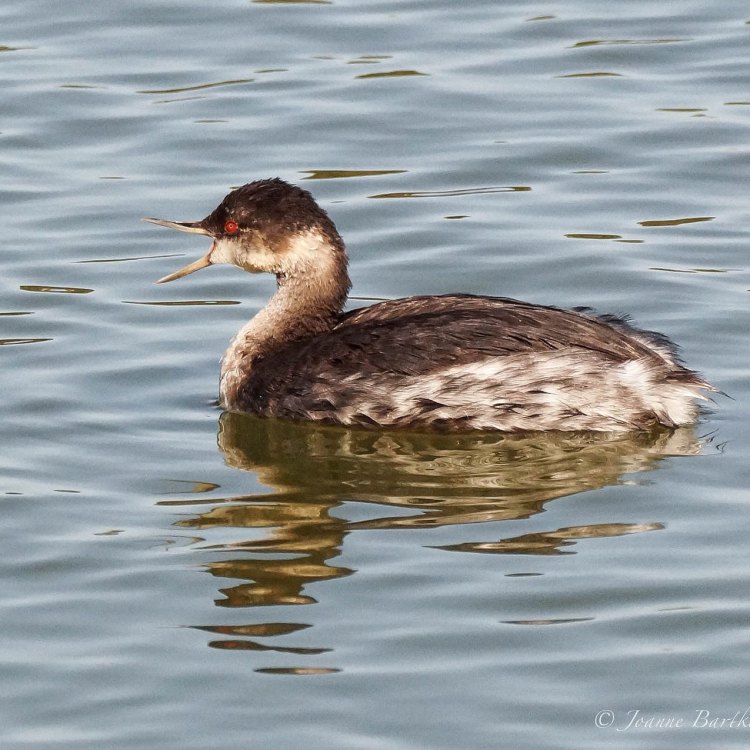
Eared Grebe
- Adult Size: Small
- Average Lifespan: 7-10 years
- Reproduction: Monogamous
- Reproductive Behavior: Form large colonies
- Sound or Call: Loud, high-pitched calls
- Migration Pattern: Migratory
- Social Groups: Form large flocks
- Behavior: Excellent swimmers and divers
- Threats: Habitat loss, predation
- Conservation Status: Least Concern
- Impact on Ecosystem: Help in maintaining freshwater ecosystems
- Human Use: Hunted for sport and for their plumage in the past
- Distinctive Features: Black cap and ear tufts
- Interesting Facts: Eared Grebes have specialized lobed feet for better swimming and diving abilities
- Predator: Birds of prey, foxes, and coyotes
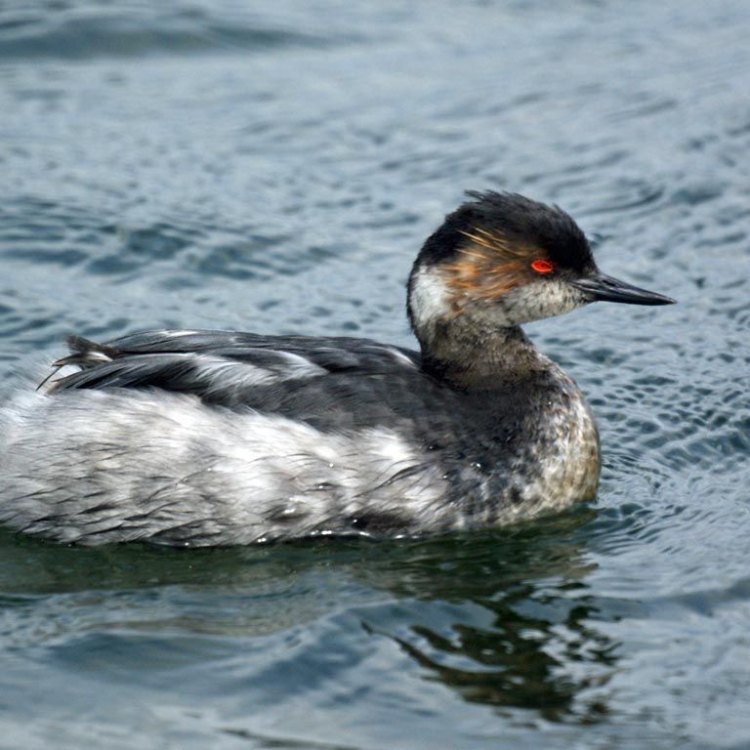
Podiceps nigricollis
The Fascinating World of the Eared Grebe: An Aquatic Wonder
In the vast expanse of the world's aquatic habitats, a small yet fascinating bird species thrives - the Eared Grebe. With its distinct features and interesting behaviors, this bird has captured the attention of bird enthusiasts and researchers alike. From its reproductive habits to its impact on the ecosystem, the Eared Grebe has a story that deserves to be told.Size and Lifespan
The Eared Grebe is a small bird, measuring only 12-16 inches in length and weighing just 9-11 ounces PeaceOfAnimals.Com. However, do not let its size fool you, as it is an excellent swimmer and diver. Its body is elongated and streamlined, allowing it to glide effortlessly through the water.
On average, these birds have a lifespan of 7-10 years in the wild, although some have been known to live up to 15 years. Their long lifespan is due to their ability to adapt to various environments, making them resilient to change.
Reproduction and Social Behavior
Eared Grebes are monogamous birds, meaning they mate with only one partner for life. During the breeding season, they gather in large colonies on shallow wetlands, lakes, and marshes. These colonies can consist of thousands of birds, creating an impressive sight to behold.
The reproductive behavior of Eared Grebes is a display of coordination and teamwork. The male and female build a floating nest together using aquatic plants, and both take turns incubating the eggs Elephant. Once the chicks hatch, they are cared for by both parents.
Sound and Migration Pattern
Despite their small size, Eared Grebes are quite loud and vocal. They use a variety of calls, including loud, high-pitched yelps and cackles. These sounds can often be heard in the early morning as the birds signal their arrival or departure from their breeding colonies.
This species is also migratory, with most birds leaving their breeding grounds in the northern hemisphere during the winter to find warmer waters. During these migrations, they can travel up to 2,500 miles.
Behavior and Distinctive Features
As mentioned earlier, Eared Grebes are excellent swimmers and divers. They use their lobed feet, with each toe having a separate flap of skin, to propel themselves underwater. This unique adaptation allows them to move swiftly and efficiently through the water.
One of the most distinguishing features of the Eared Grebe is its black cap and ear tufts. During the breeding season, these tufts become more prominent, adding to the bird's striking appearance. However, outside of the breeding season, the black markings on their head and neck almost disappear, making them difficult to distinguish from other grebe species.
Threats and Conservation Status
Unfortunately, the Eared Grebe's population has been declining in recent years due to habitat loss, predation, and human activities. Their wetland habitats are being drained and converted for human use, depriving these birds of their primary nesting and foraging grounds. They are also vulnerable to predation by birds of prey, foxes, and coyotes.
Despite these threats, the Eared Grebe is currently listed as Least Concern on the International Union for Conservation of Nature (IUCN) Red List. However, ongoing conservation efforts are necessary to ensure their survival in the long term.
Impact on the Ecosystem and Human Use
The Eared Grebe may be small, but its presence has a significant impact on the ecosystem. As they forage for their food, they help in maintaining the balance of freshwater ecosystems. Their diet consists primarily of small fish, aquatic insects, and invertebrates, keeping their populations in check.
In the past, these birds were hunted for sport and valued for their beautiful plumage. However, due to conservation efforts and regulations, these activities are no longer a significant threat to the Eared Grebe's population.
Interesting Facts
Apart from its specialized lobed feet, the Eared Grebe has several other interesting features and behaviors. For example, while they are excellent swimmers, they are not as proficient at flying. Their wings are small, and they need a running start, using their feet to paddle along the surface before taking off.
Additionally, during the breeding season, male Eared Grebes perform a fascinating display called "rushing." This behavior involves two birds swimming towards each other, their heads low in the water, and then suddenly popping out of the surface as they pass each other. It is believed that this display is a form of courtship used to attract a mate.
In terms of human use, the Eared Grebe has inspired art and poetry. The French poet Charles Baudelaire wrote a poem about the Eared Grebe's cries and its mysterious attraction. The bird has also been depicted in artwork, including paintings by John James Audubon and Louis Agassiz Fuertes.
The Eared Grebe and Its Predator
Like any other species, the Eared Grebe also has natural predators. Birds of prey, such as bald eagles and osprey, are known to prey on them, along with foxes and coyotes. However, these predators pose a more significant threat to the grebe's eggs and chicks than to the adults.
Final Thoughts
In conclusion, the Eared Grebe may be small, but it is a captivating bird with unique characteristics and behaviors. From its excellent swimming and diving abilities to its loud calls and coordinated effort in breeding, this species has fascinated humans for centuries. Its survival, along with several other aquatic bird species, is vital for the health of the world's freshwater ecosystems. As such, conservation efforts must continue to protect these fascinating creatures and their habitats. Let us appreciate the Eared Grebe and all it has to offer, for it truly is an aquatic wonder.
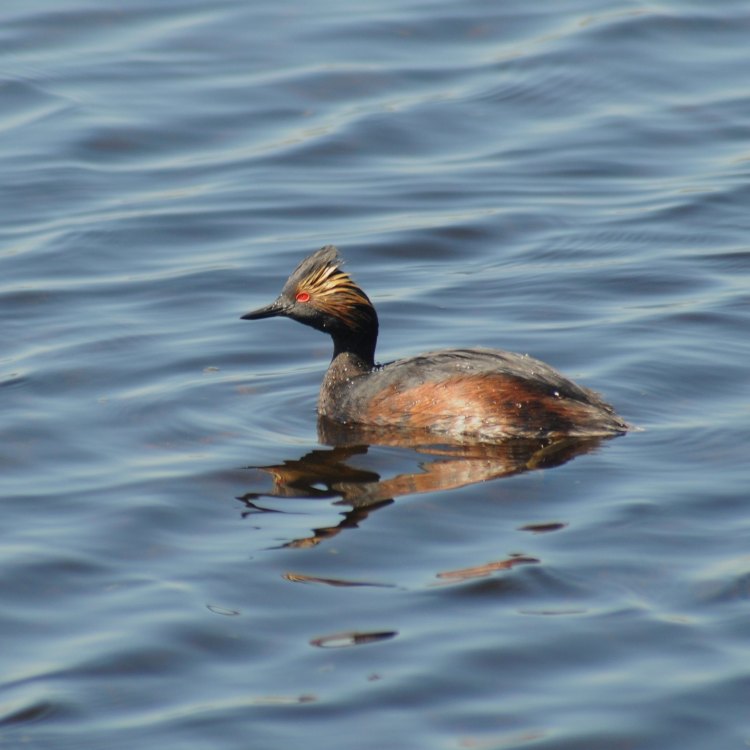
The Eared Grebe: A Fascinating Aquatic Bird
Disclaimer: The content provided is for informational purposes only. We cannot guarantee the accuracy of the information on this page 100%. All information provided here may change without prior notice.

